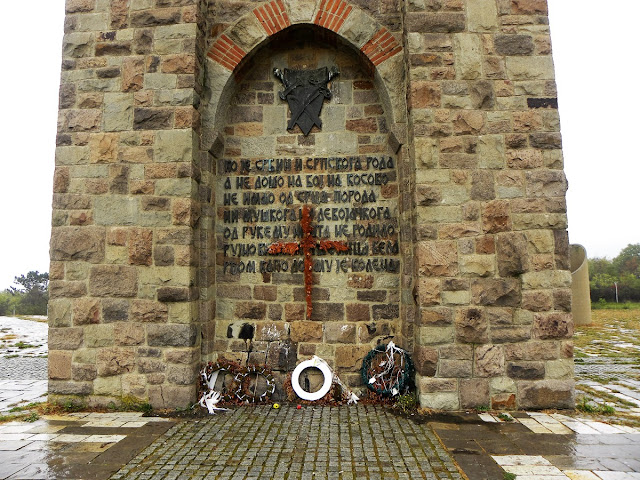Regardless, we saw huge numbers of visitors from Italy, and groups from Ireland, Germany, Ukraine, Poland, Romania, as well as the United States, and as far away as Colombia, Peru, and Argentina. We also heard Africans speaking French, though I'm not sure which nations they came from.
The English-language mass that we attended was celebrated by no less than 16 visiting priests, with a powerfully moving homily given by a priest from Uganda.
One of the restaurants, Victor's, had language-specific menus in no less than 12 different languages! And when you purchased anything in town, the prices were listed in both the local currency as well as in Euros--something extremely rare from my experience. Even in tourist-crazed Dubrovnik, Euros are not accepted.--Additionally, you might pay with local currency, but receive change in Euros; I've never seen that before!
Another sign of the town's popularity and subsequent growth is the large number of hotels and just as many new ones under construction, some right next door to sheepfolds and vineyards.
Despite the large crowds (even in what most would consider the off-season) and the usual sprawling cottage industry of souvenir shops concomitant with popular tourist destinations, Medjugorje still has an air of serenity and respect for the sacred.
 |
| St. James Church in Medjugorje |
 |
| The statue of Mary (and Crucifix in the background) on Apparition Hill. |
 |
| A nun in prayer waiting for Mirjana's message from Mary. |
 |
| We stayed at a brand new hostel, which could have been straight of 'Green Acres", as we could hear the sheep next door, and were woken by the crowing of roosters. |
 |
| It was interesting to watch the waiters assess the patrons as they walked in, and usually pegged them correctly with the corresponding menus. |













































